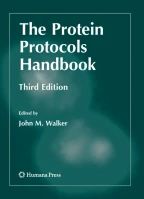
A rapid and accurate method for the estimation of protein concentration is essential in various areas of biology and biochemistry. An assay originally described by Bradford (1) has become the preferred method for quantifying protein in many laboratories. This technique is simpler, faster, and more sensitive than the Lowry method. Moreover, when compared with the Lowry method, it is subject to less interference by common reagents and non-protein components of biological samples (see Note 1). Despite the introduction of alternative protein assays, the Bradford method remains a popular technique, with the original article (1) being cited over 3,500 times in primary research papers in 2006, thirty years after its initial publication.
The Bradford assay relies on the binding of the dye Coomassie Blue G250 to protein. Detailed studies indicate that the free dye can exist in four different ionic forms for which the pKa values are 1.15, 1.82 and 12.4 (2). Of the three charged forms of the dye that predominate in the acidic assay reagent solution, the more cationic red and green forms have absorbance maxima at 470 nm and 650 nm, respectively. In contrast, the more anionic blue form of the dye, which binds to protein, has an absorbance maximum at 590 nm. Thus, the quantity of protein can be estimated by determining the amount of dye in the blue ionic form. This is usually achieved by measuring the absorbance of the solution at 595 nm (see Note 2).
This is a preview of subscription content, log in via an institution to check access.